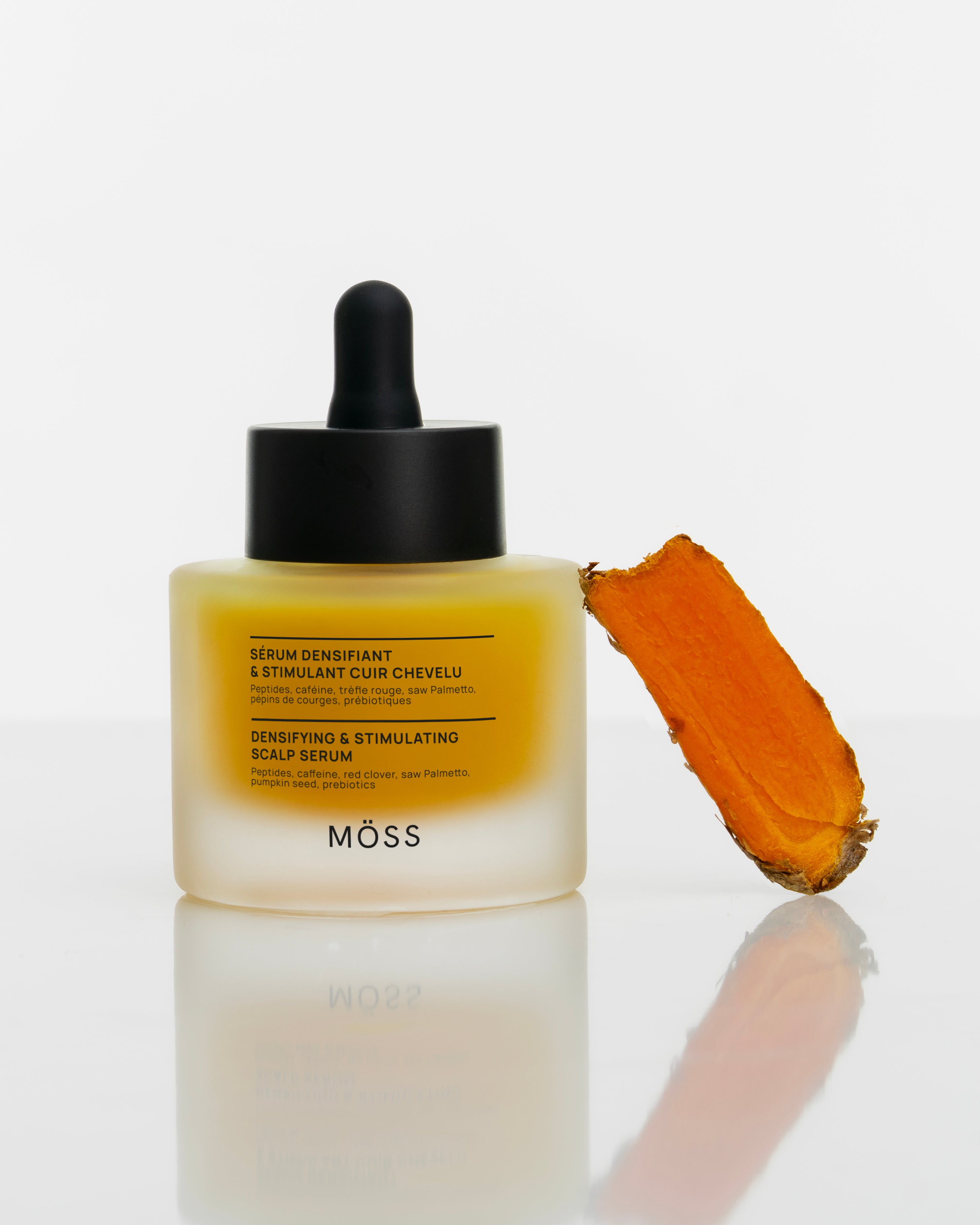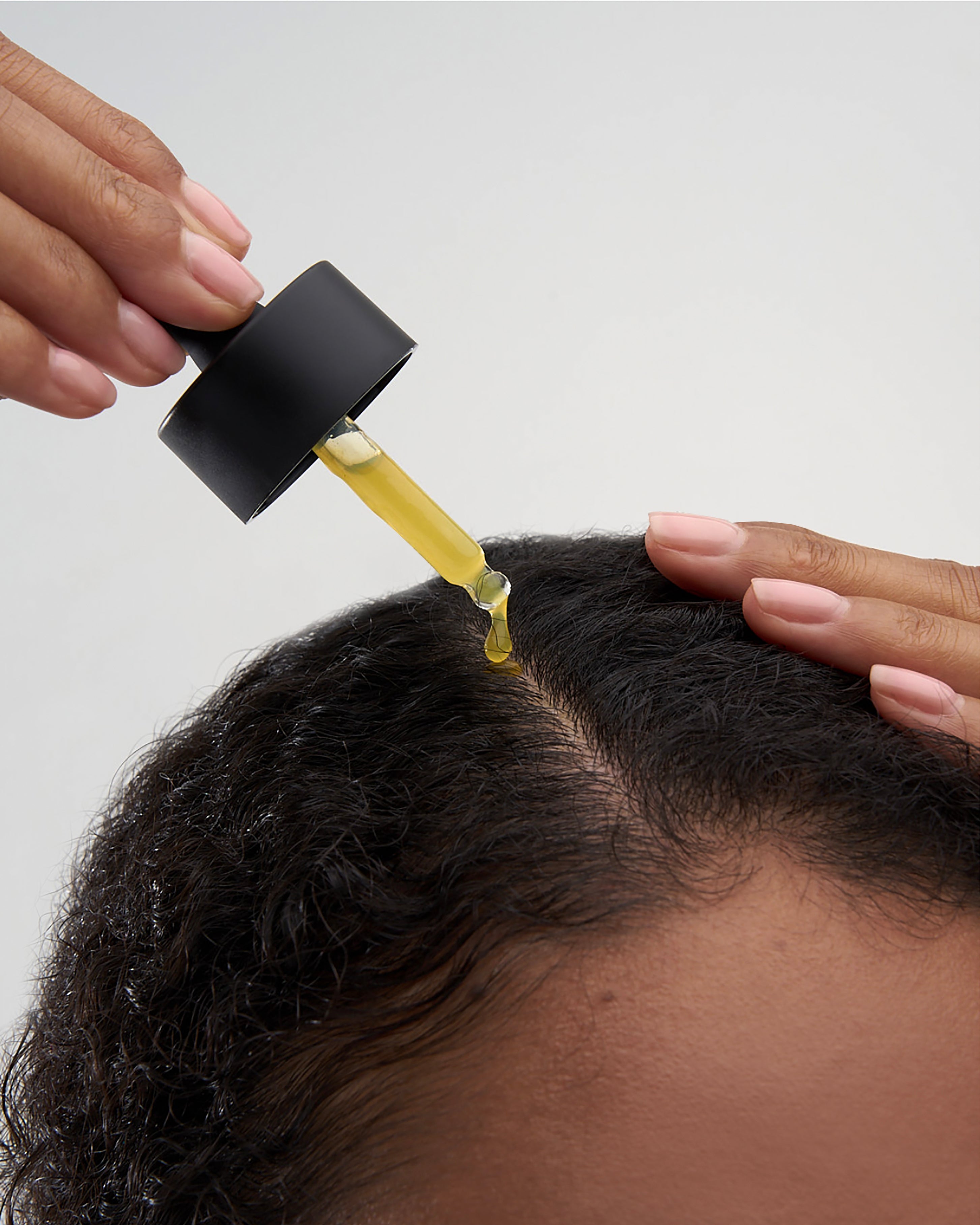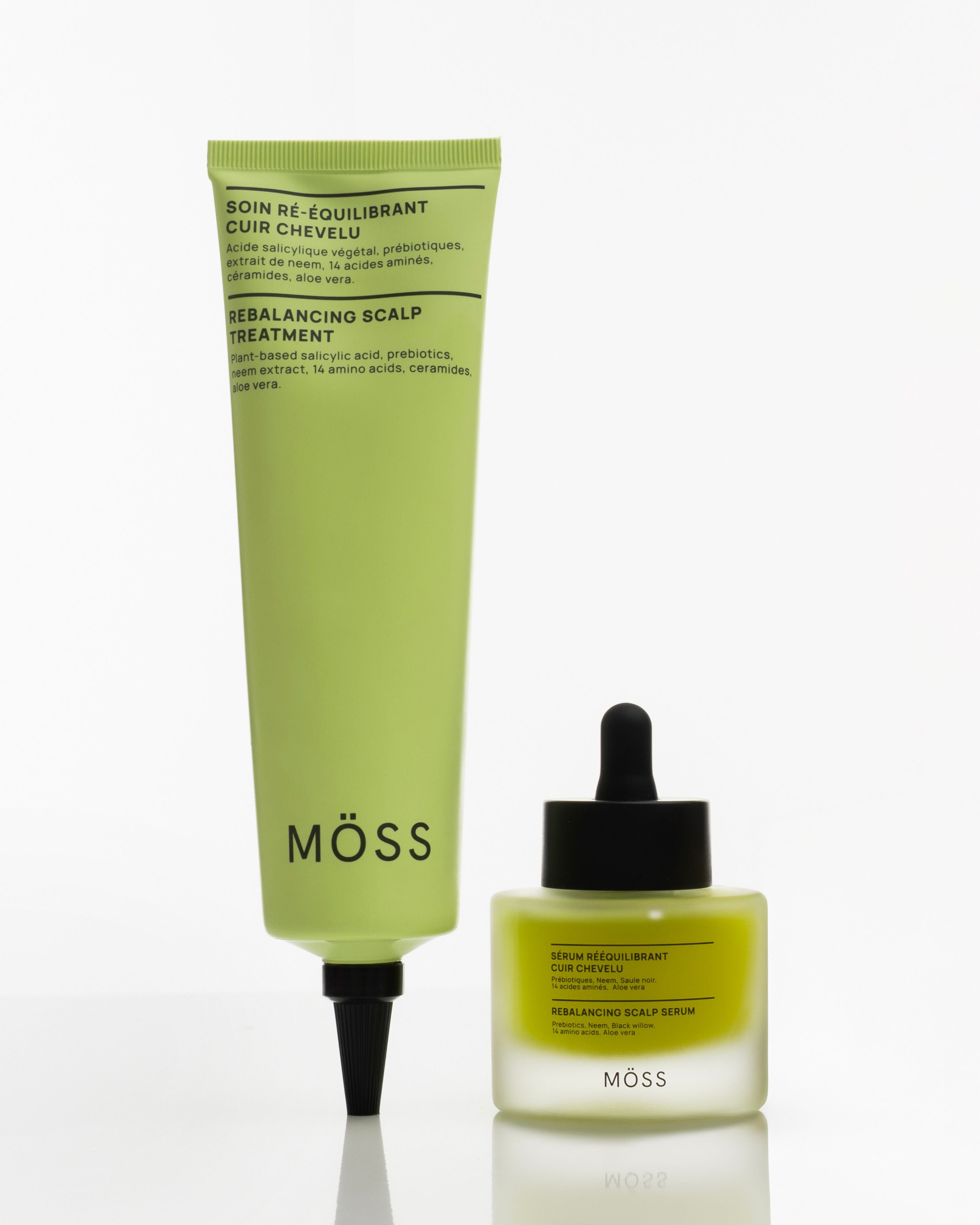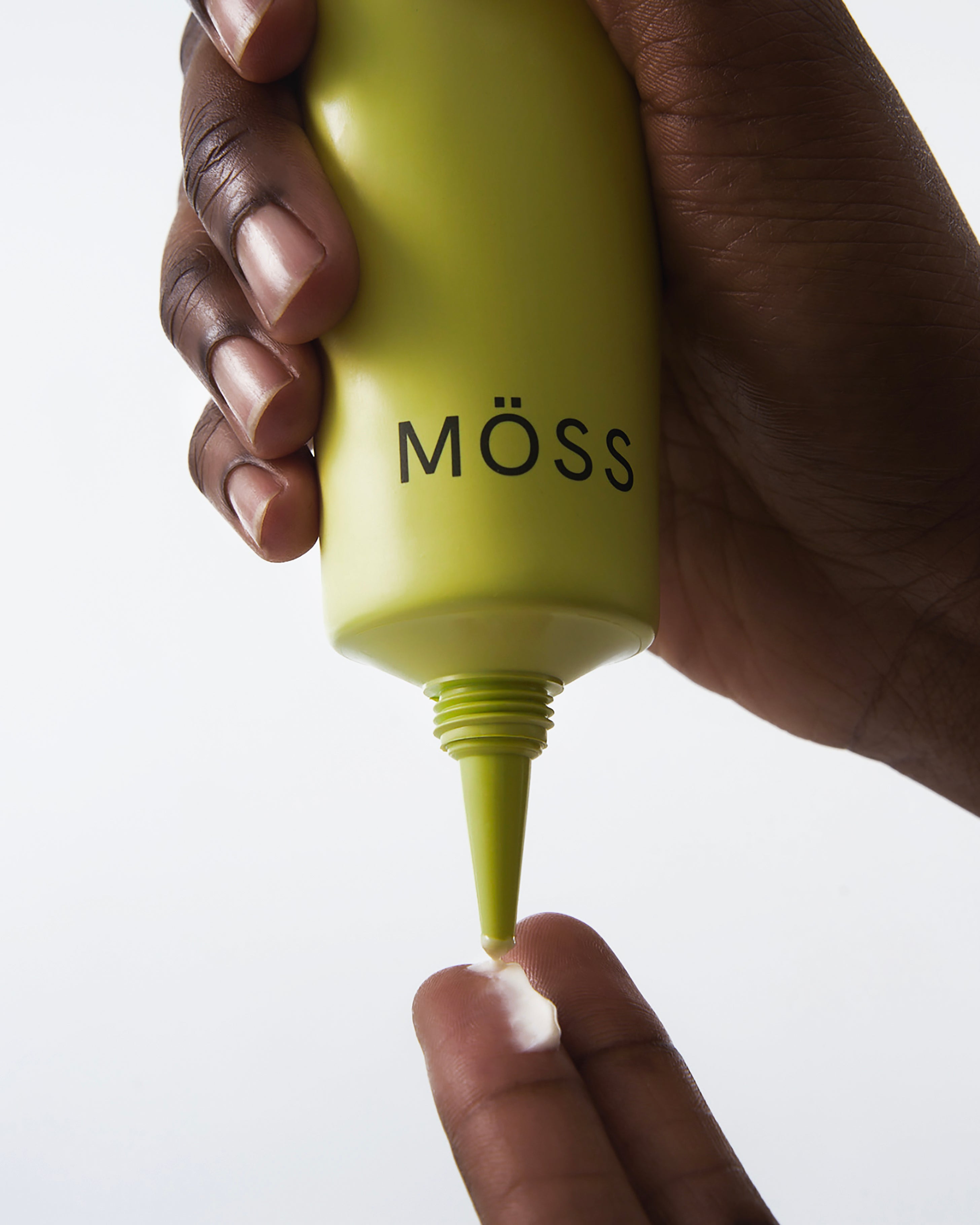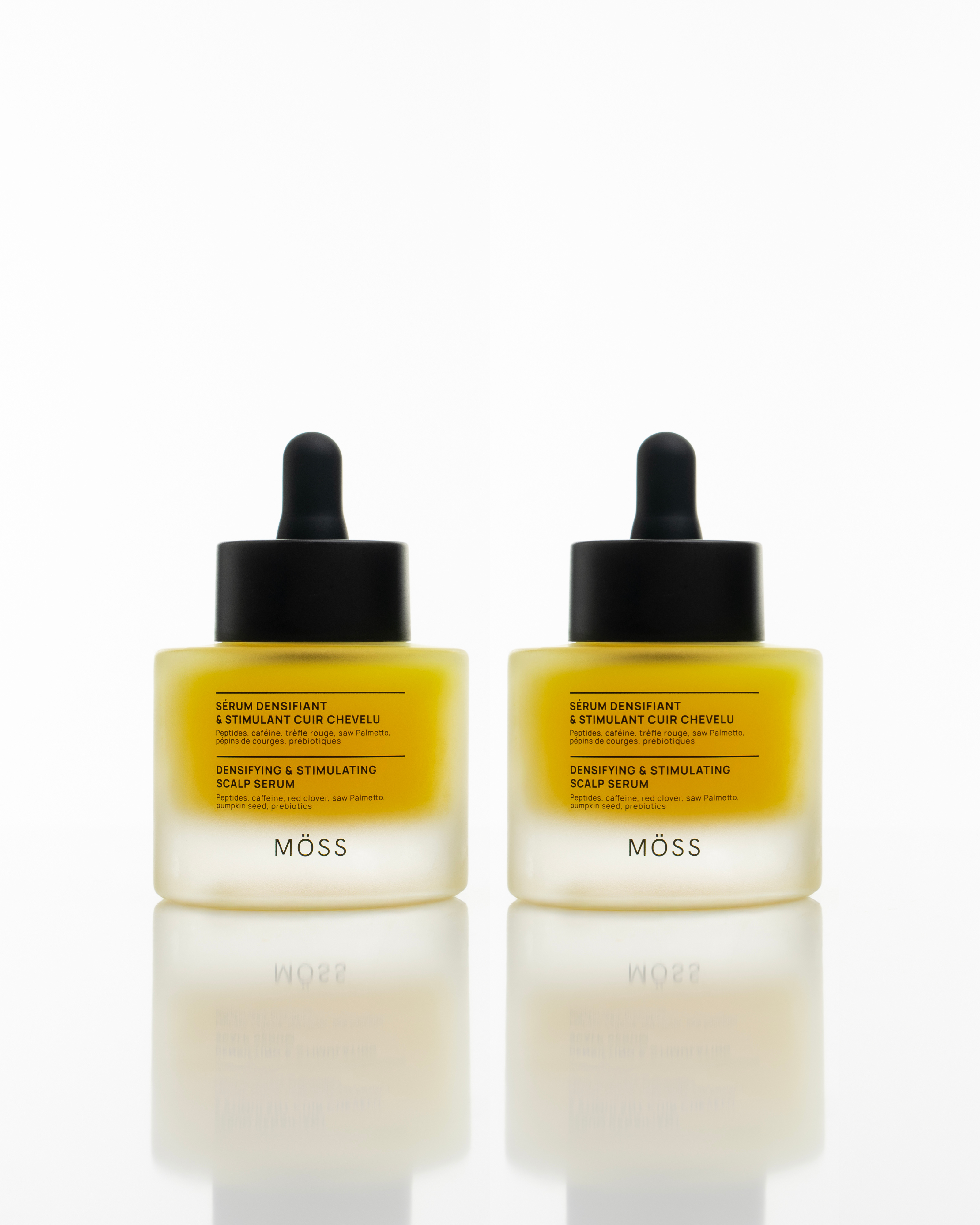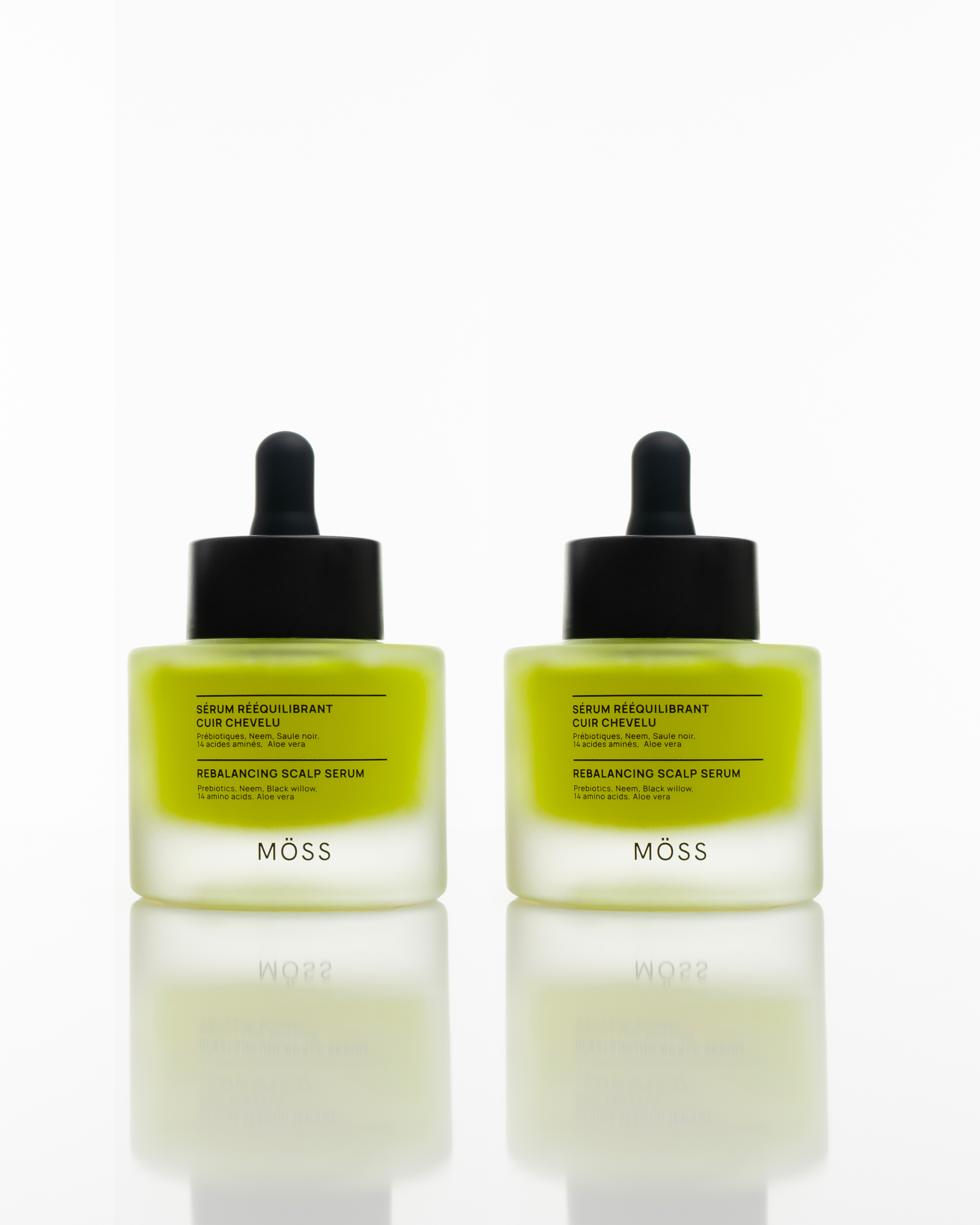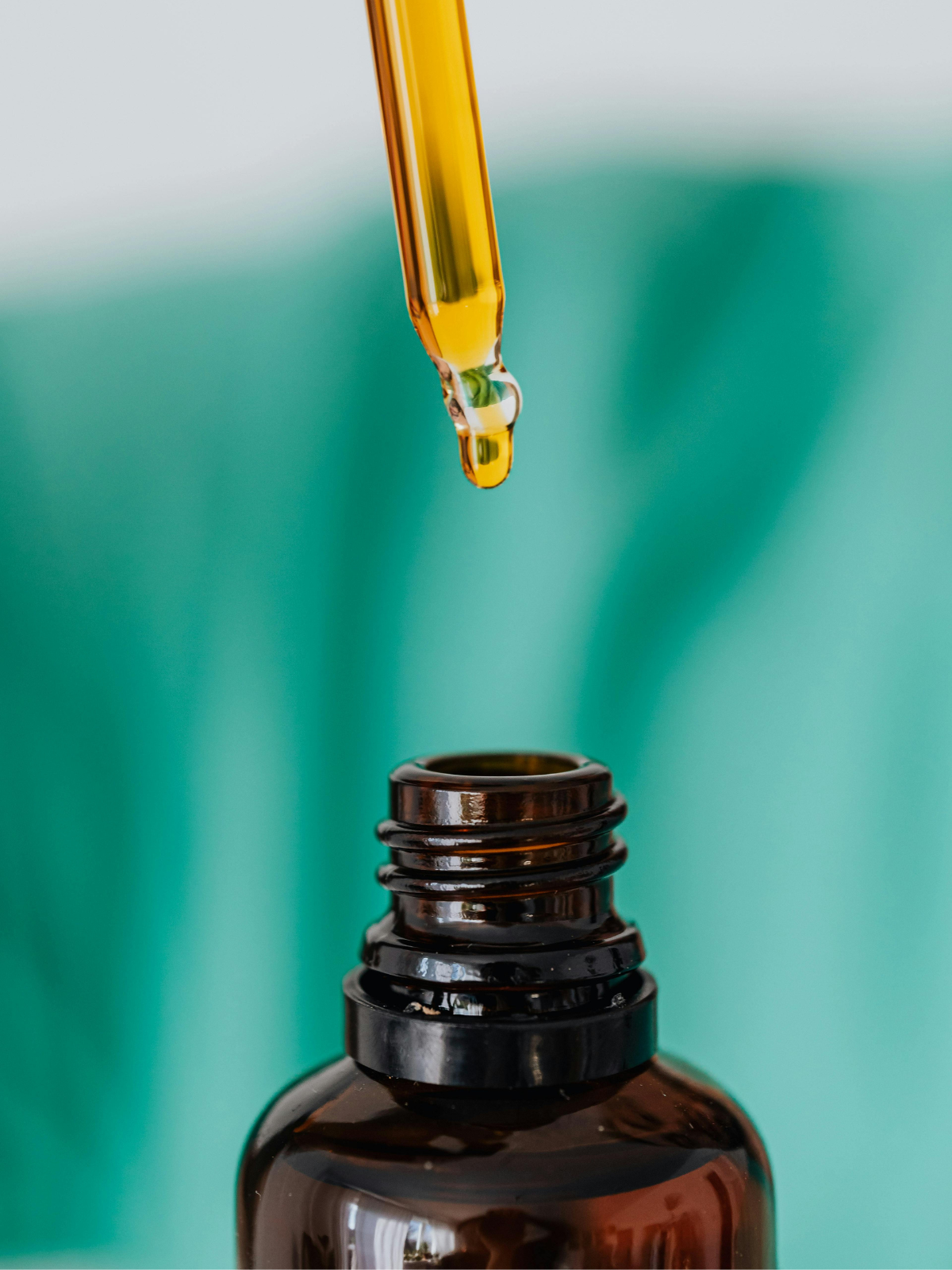How to take care of edges and avoid hair loss?

What risks do edge control products pose to our edges?
Edge control products are typically formulated as viscous gels to provide strong, long-lasting hold. The primary purpose of edge control products is to tame the delicate hair along the hairline, keeping it smooth, sleek, and precisely styled. To achieve this strong hold, most formulations rely on high concentrations of alcohol and film-forming agents like:
- Alcohols (especially short-chain like ethanol or isopropyl alcohol) evaporate quickly, giving that “instant set” effect, but also strip moisture from hair and scalp, leaving them dry and brittle. Over time, this makes hair more prone to breakage.
- PVP, silicones, and mineral oils create a film over the hair. While this delivers sleekness and protection from humidity, they can accumulate on the scalp, clog pores, and potentially interfere with normal follicle function. A congested follicle may receive less oxygen and nutrients, weakening the hair root over time.
- Repeated buildup can lead to folliculitis (inflammation of hair follicles), increasing shedding.
Moreover, if edge control is not properly cleansed from the scalp, it can harden around hair strands, causing mechanical stress when combed or brushed. Combined with tight styles, this is a perfect storm for edge thinning.
Is the hair around our hairline different in structure and care needs?
Yes. The hair along the hairline (often called “baby hairs”) is:
- Finer in diameter than the rest of your hair, meaning it has less cuticle protection and is more vulnerable to breakage.
- Often shorter in growth cycle, so it appears more delicate and is less able to withstand repeated tension.
- More sensitive to hormonal changes, including those driven by stress, postpartum shifts, or androgen levels.
This means it requires more gentle care, avoiding harsh products or excessive manipulation.
Why is it common for people not to prioritize edge health when styling?
Edges are often styled primarily for aesthetic reasons. Slicking them down is seen as essential to achieve polished looks—especially for protective styles.
Because these hairs tend to stand out , there’s a tendency to reach for strong-hold gels or waxes without considering long-term health. Many people prioritize the immediate look over prevention of damage, often unaware that these repeated stresses lead to permanent thinning over time.
Why should we look after our edges more?
- They are the most fragile and sensitive hairs, with fewer cuticle layers to protect the cortex.
- More responsive to hormonal miniaturization (like during postpartum shedding or menopause).
- Once edges thin dramatically, regrowth is often slow and incomplete because follicles can shrink or go dormant permanently.
By prioritizing edge care, we maintain a fuller, healthier hairline that supports all hairstyles beautifully.
How should we protect our edges?
Avoid tight styles. Constant tension from braids, weaves, or tight ponytails can trigger traction alopecia, a type of hair loss from pulling.
Choose gentle edge control formulas. Look for alcohol-free, non-occlusive options.
Wash regularly to prevent buildup from gels, oils, and sweat that could clog follicles.
Exfoliate the scalp gently to clear debris and dead skin.
Nourish the follicles with treatments that support circulation and replenish the scalp environment.
At Möss Paris, we’ve developed our Rebalancing Scalp Treatment, formulated to stimulate tired follicles, clear buildup, and provide nutrients essential for hair resilience.
How to prevent hair loss around the hairline?
- Avoid overtightening styles and switch positions of braids or ponytails to reduce constant stress on the same follicles.
- Use satin or silk scarves or pillowcases to reduce friction while sleeping.
- Keep the scalp hydrated and balanced to minimize dryness that makes breakage worse.
- Manage stress and check for nutritional gaps (iron, vitamin D, zinc, biotin—all play roles in hair cycling).
How can we use edge control without triggering hair loss?
- Opt for alcohol-free and non-occlusive formulations.
- Avoid heavy layers of product day after day without cleansing.
- Wash and clarify regularly to remove buildup.
- Use a scalp-stimulating treatment weekly to keep follicles oxygenated and active.
- When laying edges, avoid aggressive brushing. Use soft edge brushes and limit manipulation.

